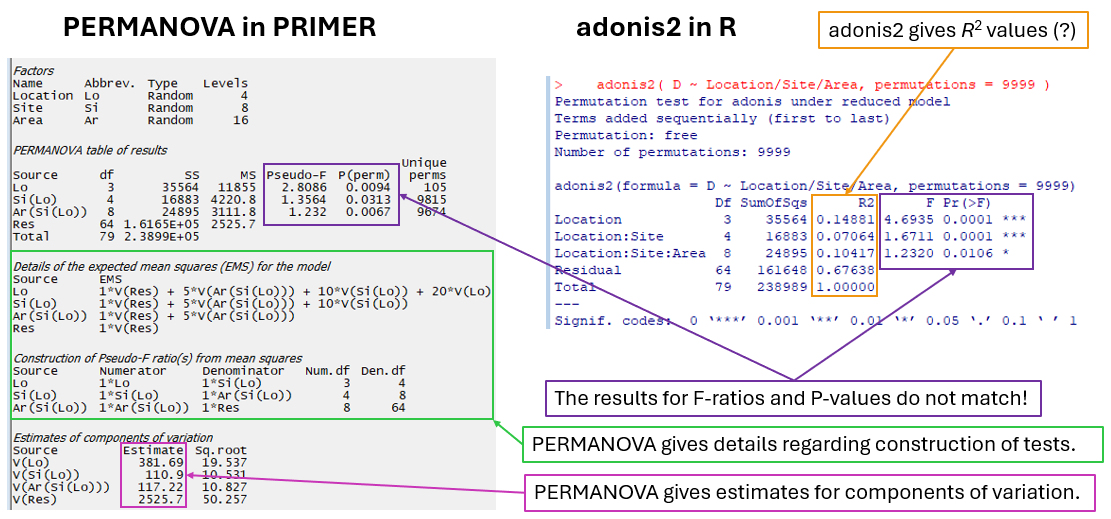3.5 What about $R^2$ values?
Another clear difference between the output given by adonis2 by comparison with the output given by PERMANOVA in PRIMER is the fact that adonis2 provides an additional column, headed 'R2'. These are values of $R^2$ for a given term in the model, calculated directly as the ratio of an individual term's explained sum of squares (SSterm) divided by the total sum of squares (SStotal, Fig. 4). Unfortunately, the inclusion of this column is, in my view, misguided.
 Fig. 4. PERMANOVA gives estimates for components of variation based on EMS, whereas 'adonis2' gives $R^2$ values in the output.
Fig. 4. PERMANOVA gives estimates for components of variation based on EMS, whereas 'adonis2' gives $R^2$ values in the output.
Why doesn't PERMANOVA output $R^2$ values?
Sums of squares (SS) are used to partition variation in the multivariate data cloud in the space of the resemblance measure according to each term in the PERMANOVA model. However, these SS values cannot be compared directly with one another, quite simply because they have different degrees of freedom (df). For example, the SS for a term with 64 df would automatically be expected to 'explain more' than a term with just 3 df. To put this quite simply in another way: a sum of squares is not the same thing as a variance.
In addition, the mean squares (MS) are also not able to be compared directly with one another. As already outlined above, the expectations of mean squares can (and very often do) include more than one source of variation, and this also must be taken into account when we wish to quantify the relative sizes and (hence) the relative importance of the effects (or terms) in any given model.
Values of $R^2$ can never be interpreted directly as 'effect sizes' in an ANOVA context. That is why we don't use raw $R^2$ values (the term's SS divided by the total SS) in order to quantify the relative importance of individual terms from a PERMANOVA (or ANOVA) model. This would be a mistake with the potential to mislead, even for a classical univariate ANOVA. (In contrast, it may be fine to use $R^2$ values in ordinary least-squares regression models for comparative purposes, considering one variable at a time, where every predictor variable is on an equal footing and has just 1 df.)
As it is potentially quite misleading to include $R^2$ values in an ANOVA table, PERMANOVA in PRIMER does not provide them in the output. Instead, it uses the EMS to carefully estimate components of variation for each term in the model. These components can indeed be directly compared to assess the relative importance/contribution of individual terms (sources of variation) in the model.
